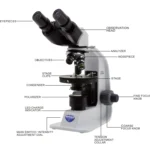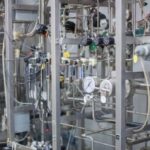O Level Biology 18 Views 1 Answers
Sourav PanLv 9November 4, 2024
Explain that the gene that controls the production of human insulin has been inserted into bacterial DNA, for commercial production of insulin
Explain that the gene that controls the production of human insulin has been inserted into bacterial DNA, for commercial production of insulin
Please login to save the post
Please login to submit an answer.
Sourav PanLv 9May 15, 2025
The production of human insulin through genetic modification involves inserting the gene responsible for insulin synthesis into bacterial DNA, enabling these microorganisms to produce functional insulin. Here’s a detailed explanation of this process:
Genetic Modification Process
- Isolation of the Insulin Gene:
- The gene that codes for human insulin is isolated from the human genome. This gene contains the necessary instructions for producing insulin, a protein hormone essential for regulating blood sugar levels.
- Insertion into Bacterial DNA:
- The isolated insulin gene is then inserted into a plasmid, which is a small, circular piece of DNA found in bacteria. This plasmid acts as a vector to carry the insulin gene into the bacterial cells. The plasmid is cut using restriction enzymes, allowing the insulin gene to be ligated (joined) into the plasmid using DNA ligase.
- Transformation of Bacteria:
- The modified plasmid containing the insulin gene is introduced into a bacterial strain, commonly Escherichia coli (E. coli), through a process called transformation. This process allows the bacteria to take up the plasmid and incorporate it into their own genetic material.
- Bacterial Production of Insulin:
- Once inside the bacterial cells, the insulin gene is expressed, leading to the production of proinsulin (the precursor to insulin). The bacteria utilize their cellular machinery to translate the genetic instructions encoded in the plasmid into proteins.
- Purification and Processing:
- The proinsulin produced by the bacteria undergoes further processing to form active insulin. This involves cleaving off certain peptide sequences (such as the C-peptide) through enzymatic reactions to yield mature insulin, which can then be purified for medical use.
Commercial Production
- The use of recombinant DNA technology for producing human insulin in bacteria has revolutionized diabetes treatment. This method allows for large-scale production of insulin that is structurally identical to natural human insulin, significantly reducing the risk of allergic reactions associated with animal-derived insulins.
- Since its development in the late 1970s and early 1980s, recombinant human insulin has become widely used in clinical settings, providing a reliable and effective treatment option for individuals with diabetes.
0
0 likes
- Share on Facebook
- Share on Twitter
- Share on LinkedIn
0 found this helpful out of 0 votes
Helpful: 0%
Helpful: 0%
Was this page helpful?




